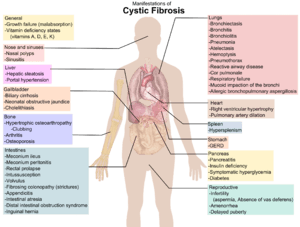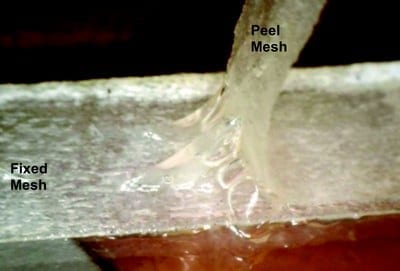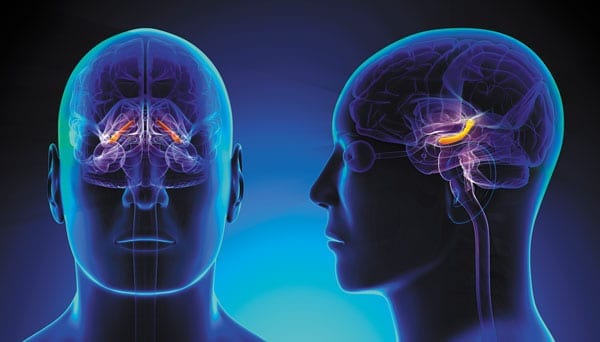
They hope to start clinical trials in cystic fibrosis patients in the coming years.
Cystic fibrosis is a lethal genetic disorder that in France affects one child per 4,500 births. An international team led by scientists at the Institut Fédératif de Recherche Necker-Enfants Malades (CNRS/Inserm/Université Paris Descartes), led by Aleksander Edelman, has recently discovered two new compounds that could be used to treat patients carrying the most common mutation. By means of virtual screening and experiments on mice and human cells in culture, the scientists were able to screen 200,000 compounds and selected two that allowed the causal mutated protein to express itself and fulfill its function. These findings were recently published online in EMBO Molecular Medicine.
Cystic fibrosis is a genetic disorder that affects the epithelia of numerous organs, and particularly those in the lungs, pancreas and intestine. In the lungs, this takes the form of insufficient epithelial hydration, resulting in excess mucus in the bronchi. This mucus retains pathogenic agents and favors the onset of chronic infections and inflammatory conditions that are ultimately fatal to the sufferer.
The disease is caused by mutations in the gene coding for a protein called CFTR (cystic fibrosis transmembrane conductance regulator). This protein, which is essential to ensure the passage of water through an epithelium, is an ion channel that allows chloride ions to pass through cell membranes. To date, about 2,000 gene mutations that cause the disease have been determined, but 70% of cases of cystic fibrosis are due to a single mutation called F508. And it is this mutation that is targeted by the recently-discovered compounds.
The scientists used computer techniques to screen 200,000 compounds, looking for those that might interact with a specific zone in the abnormal protein, and found about a dozen potentially active molecules. Using these 12 compounds, they then performed in-vitro tests on human cell cultures and in-vivo experiments on mice showing this mutation. They were thus able to observe that two of these compounds allowed the mutated F508-CFTR protein to be trafficked to the membrane and fulfill its role.
The Latest Bing News on:
Cystic Fibrosis
- The Amazing Ruck for the Cystic Fibrosis Association of North Dakotaon May 7, 2024 at 6:16 pm
"So, the virtual event has been exciting and fun. We're just getting started. So, we have several weeks left for everybody to jump on and donate and make us walk," Staiger said.
- Butte Calcutta raises more than $42,000 for Cystic Fibrosis supporton May 7, 2024 at 11:56 am
Organizers say the 10th annual Butte Cystic Fibrosis NCAA March Madness Calcutta was once again a success, raising $34,785 for the Cystic Fibrosis Foundation and another $8,500 for the Cody Dieruf ...
- Cystic Fibrosis Community Perspectives Influence Future of CF Care Modelon May 7, 2024 at 6:48 am
The Cystic Fibrosis Foundation conducted a national survey of people with cystic fibrosis, families, and clinicians to understand how CF care centers can adapt to meet the changing needs of people ...
- Vertex Touts 13% Revenue Jump, Beats Profit Estimates on Strong Cystic Fibrosis Performanceon May 7, 2024 at 6:38 am
With a total revenue of nearly $2.7 billion, Vertex exceeded analyst estimates in the first quarter, bolstered by strong uptake of its cystic fibrosis products.
- Vertex files FDA approval ask for next-gen cystic fibrosis candidate, resumes diabetes cell therapy trialon May 7, 2024 at 4:30 am
Now, Vertex is asking for the FDA to approve vanza triple for people with CF aged 6 years and older. The Boston-based company also completed a submission in Europe for the same indication and is on ...
- Vertex Pharmaceuticals 1Q Sales Up 13% on Cystic Fibrosis Drugon May 6, 2024 at 1:22 pm
By Paul Ziobro Vertex Pharmaceuticals posted double-digit sales growth in the first-quarter, topping Wall Street expectations, on continued growth of ...
- Vertex tops Q1 profit estimates on robust demand for cystic fibrosis treatmentson May 6, 2024 at 1:11 pm
Vertex Pharmaceuticals beat Wall Street estimates for first-quarter profit on Monday, driven by robust uptake for its cystic fibrosis treatments. Cystic fibrosis (CF) - an inherited disorder that ...
- Parents of Infants With Cystic Fibrosis Often Feel Confused, Unsupported: Surveyon May 6, 2024 at 3:07 am
MONDAY, May 6, 2024 (HealthDay News) -- Parents of newborns diagnosed with cystic fibrosis often are confused about both the disease and their next steps, a new national survey has found. In fact, ...
- Survey of US parents highlights need for more awareness about newborn screening, cystic fibrosison May 5, 2024 at 12:00 pm
A national survey led by Ann & Robert H. Lurie Children's Hospital of Chicago found that parents have insufficient knowledge of newborn screening in general and of cystic fibrosis (CF) in particular.
- A New Delivery System Offers Hope for Cystic Fibrosison May 1, 2024 at 7:52 am
CRISPR-carrying lipid nanoparticles enabled researchers to correct a rare nonsense mutation in the lungs of a cystic fibrosis mouse model.
The Latest Google Headlines on:
Cystic Fibrosis
[google_news title=”” keyword=”Cystic Fibrosis” num_posts=”10″ blurb_length=”0″ show_thumb=”left”]
The Latest Bing News on:
Inflammatory conditions
- 7 Worst Inflammatory Foods Doctors Say Make Weight Loss 'So Much Harder': Sugary Condiments & Moreon May 7, 2024 at 11:30 am
Certain foods are notorious for their inflammatory properties, potentially making weight management more challenging and increasing the risk of chronic diseases. These “worst inflammatory foods” often ...
- A potential treatment for inflammatory bowel disease: Engineered yeast can transport medicines and lower inflammationon May 7, 2024 at 9:48 am
Inflammatory bowel disease (IBD) is a complex condition that requires individualized care to meet the needs of the patient's current disease state. With available medications sometimes causing serious ...
- Gut bacteria metabolite shows promise in fighting inflammatory bowel diseaseon May 7, 2024 at 7:34 am
Gut microbiota or the population of microbial inhabitants in the intestine, plays a key role in digestion and maintenance of overall health. Any disturbance in the gut microbiota can, therefore, have ...
- Intermittent fasting protects against liver inflammation and liver canceron May 6, 2024 at 4:59 pm
The most common chronic liver condition is non-alcoholic fatty liver disease. It can have serious consequences: If left untreated, it can lead to liver inflammation (metabolic dysfunction-associated ...
- The #1 Thing to Avoid If You Have Chronic Inflammation, According to Dietitianson May 6, 2024 at 12:27 pm
“Left untreated, it [chronic inflammation] lays the groundwork for the development of serious, chronic conditions such as heart disease, diabetes, autoimmune conditions, Alzheimer's disease and ...
- Risk for 'most' cardiovascular diseases no higher with inflammatory bowel disease, study findson May 6, 2024 at 4:20 am
Among postmenopausal women with inflammatory bowel disease (IBD), there is no higher risk for cardiovascular disease (CVD) compared with women without IBD, although the risk for ischemic stroke may be ...
- Inulin fiber exacerbates inflammatory bowel disease, study findson May 2, 2024 at 10:53 pm
Inulin, a type of fiber found in certain plant-based foods and fiber supplements, causes inflammation in the gut and exacerbates inflammatory bowel disease in a preclinical model, according to a new ...
- This Common Condition Can Damage Joints Long Before It’s Detectedon May 2, 2024 at 8:04 am
Nearly 33 million Americans have osteoarthritis. Experts explain how it affects the body, and why it’s so hard to diagnose.
- Columbia scientists identify new brain circuit in mice that controls body’s inflammatory reactionson May 1, 2024 at 8:03 am
neurodegenerative diseases, lupus, inflammatory bowel disease and Crohn's disease, as well as conditions such as long COVID syndrome, immune rejection of transplanted organs, and the potentially ...
- 6 Subtle Ways Your Body Is Telling You That You May Have Gut Inflammationon April 30, 2024 at 9:25 am
When your gut is inflamed, you may notice that your skin flares up as well. “The gut microbiome modulates the immune system's response to inflammation, influencing the development and progression of ...
The Latest Google Headlines on:
Inflammatory conditions
[google_news title=”” keyword=”inflammatory conditions” num_posts=”10″ blurb_length=”0″ show_thumb=”left”]










